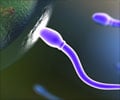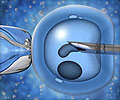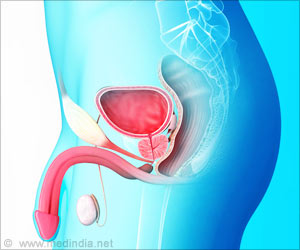A presentation made by Cornell University researchers at the ongoing 47th Annual meeting of the American Society for Cell Biology suggests that the biological pathway that powers sperm to swim long distances may be harnessed to nanotech devices, releasing drugs or performing mechanical functions inside the body.
It is believed that the presentation by researchers at the university’s Baker Institute of Animal Health was the first to show how multistep biological pathways could be assembled, and could function on a human-made device.Mammalian sperm have long, thin, whip-like tails that power their swimming. They meet the challenge of energy delivery, in part, by onsite power generation, modifying the enzymes of glycolysis so that they can attach themselves to a solid structure running the major length of the sperm tail.
From that secure perch, glycolytic enzymes convert sugar into ATP, supplying energy all along the sperm’s bending and flexing tail.
Chinatsu Mukai, Alex Travis, and others at Cornell’s College of Veterinary Science looked at the early steps in the glycolysis pathway to determine whether they could move it from the thin “fibrous sheath” that covered the sperm tail to a solid inorganic substitute, a nickel-NTA (nitrilotriacetic acid) chip.
They began their work by replacing the sperm-specific targeting domain of hexokinase, the first enzyme of glycolysis, with a tag that binds to a special gold surface.
Even when tethered, the enzyme remained functional, they said.
The researchers then tagged the second enzyme in the pathway, glucose-6-phosphate isomerase, which was also active when tethered. With both attached to the same support, the enzymes acted in series with the product of the first reaction serving as substrate for the second.
Mukai and Travis said that their work was only the first step in reproducing the full glycolytic pathway on an inorganic support.
According to them, their work serves as proof of principle that the organization of the glycolytic pathway in sperm may provide a natural engineering solution of how to produce ATP locally on nano devices.
Source-ANI
KAR/P








